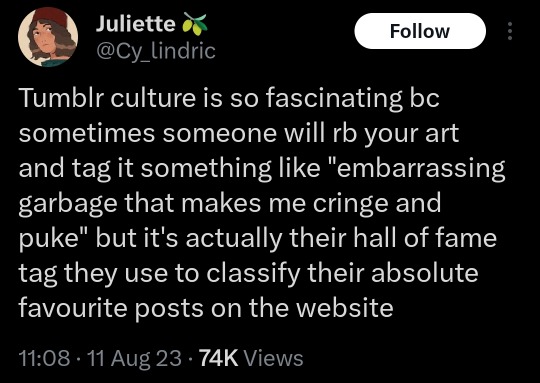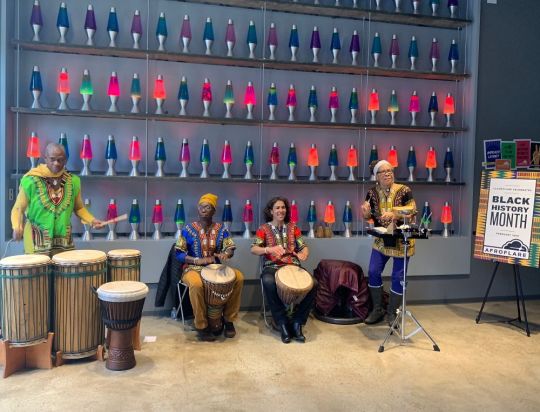#004 Data processing & computer science
Explore tagged Tumblr posts
Text
5 leading NLP organizations tooling up gadgets for understanding spoken words

Natural language processing (NLP) is an artificial intelligence area that aids computers in comprehending, interpreting, and manipulating human language. In order to bridge the distance between human communication and machine comprehension, NLP organizations depend on a variety of fields, including computer science and computational linguistics.
Natural language processing enables computers to speak with people in their own language and accomplish other linguistic tasks. NLP, for example, allows computers to read text, listen to voice, evaluate it, gauge emotion, and identify which bits are significant.
Machines can now interpret more language-based data than people, without becoming exhausted, and in a consistent, impartial manner. Given the massive amounts of unstructured data created every day, from medical records to social media, automation will be essential for accurately processing text and audio data.
The complexity and diversity of human language is remarkable. We can communicate in a variety of ways, both orally and in writing. There are hundreds of languages and dialects, and each one has its own set of grammar and syntax rules, as well as words and slang. We frequently spell it wrong, shorten, or omit punctuation when writing. We have local dialects, mumble, stammer, and adopt terminology from other languages when we talk.
While controlled and uncontrolled learning, as well as deep learning, are now commonly employed to mimic human language, there is still a requirement for syntactic and semantic knowledge, as well as domain expertise, which current machine learning techniques do not always provide. NLP organizations are significant because it helps clarify linguistic uncertainty and gives helpful quantitative structure to data for many downstream applications, such as voice recognition and text analytics.
Get | Download Sample Report @ https://www.verifiedmarketresearch.com/download-sample?rid=24697&utm_source=Free&utm_medium=004
5 leading NLP organizations around the world
According to Global NLP Organizations’ Market Report, the market was standing at USD 11.02 Billion in 2020 and is predicted to rise at USD 45.79 Billion by 2028. To know the reasons behind the CAGR of 19.49 % from 2021 to 2028.
IBM IBM has built a thorough, comprehensive corporate citizenship strategy that we think matches with IBM’s values and enhances the influence they can have as a global corporation. They concentrate on certain social challenges such as the environment, community economic development, education and skills, public health, literacy, language, and culture, to name a few. Outside of work, IBM supports creative interests and passions, giving us everyone a fresh perspective on the world and its rising digital potential. Together, IBM and its partners can make significant progress via real innovation and action.
NetBase Quid NetBase Quid is a next-generation customer and business intelligence platform that offers contextual perspectives to expose market dynamics, engage with customers, and comprehend the narrative behind rivals and the industry. The platform employs powerful artificial intelligence to analyze billions of indexed resources across all types of structured and unstructured data, enabling the brand, agency, and consulting services buyers to create smart, data-driven choices with accuracy, speed, and efficiency.
SAS For enterprises seeking quick benefit from their data, SAS is a trusted analytics powerhouse. Their customers return to them because they have a deep bench of analytics solutions and a wide understanding of the sector. With SAS, we can deduce meaning from your data. Figure out what works and what doesn’t. Improve your decision-making. And we’ll be able to make a difference. They see a world in which everyone can make the right decisions based on reliable data and aided by SAS Analytics’ power and scalability.
Ask For Report Details @ https://www.verifiedmarketresearch.com/product/natural-language-processing-market/?utm_source=Free&utm_medium=004
Verint Verint connects work, data, and experiences throughout the workplace to enable the world’s most famous companies develop long-lasting customer connections. Verint enables businesses to adapt to the future of work, remove inefficiencies caused by institutional and data silos, and provide distinctive experiences at scale. Their products assist legendary businesses in bridging the gap formed when they lack the resources needed to produce experiences that meet or exceed customer aspirations.
Hewlett-Packard Enterprise Hewlett-Packard Enterprise is committed to providing an exceptional customer experience. From how to consume to where to deploy and the capacity to grow when needed, our comprehensive approach to all your applications and data provides you the freedom and choice you need. HPE enables us to connect, secure, monitor, and act on all of the data, from edge to cloud, to help users transform and operate your digital business. They’re here to assist users address their most important data and IT concerns, no matter where we are on the transformation path.
Future possibilities
The market for NLP will benefit from increased demand for advanced text analytics. Advanced text analytics solutions have risen as a result of the integration of natural language processing with text analytics. NLP aids in the translation of human speech into computer speech. This aids with data analysis and the conversion of findings into human language for easier comprehension. The growing demand for text analytics in various organizations in order to acquire better market insights has pushed the demand for text analytics solutions. Which will lead to the growth of NLP organizations.
For More Information @ https://www.verifiedmarketresearch.com/download-sample?rid=24697&utm_source=Free&utm_medium=004
About us –
Verified Market Research is a leading Global Research and Consulting firm that has been providing advanced analytical research solutions, custom consulting and in-depth data analysis for 10+ years to individuals and companies alike that are looking for accurate, reliable and up to date research data and technical consulting. VMR offers insights into strategic and growth analyses, Data necessary to achieve corporate goals and help make critical revenue decisions.
Our research studies help our clients make superior data-driven decisions, understand market forecasts, capitalize on future opportunities and optimize efficiency by working as their partner to deliver accurate and valuable information. The industries we cover span over a large spectrum including Technology, Chemicals, Manufacturing, Energy, Food and Beverages, Automotive, Robotics, Packaging, Construction, Mining & Gas. Etc.
We, at Verified Market Research assist in understanding holistic market indicating factors and most current and future market trends. Our analysts, with their high expertise in data gathering and governance, utilize industry techniques to collate and examine data at all stages. They are trained to combine modern data collection techniques, superior research methodology, subject expertise and years of collective experience to produce informative and accurate research.
Having serviced over 5000+ clients, we have provided reliable market research services to more than 100 Global Fortune 500 companies such as Amazon, Dell, IBM, Shell, Exxon Mobil, General Electric, Siemens, Microsoft, Sony and Hitachi. We have co-consulted with some of the world’s leading consulting firms like McKinsey & Company, Boston Consulting Group, Bain and Company for custom research and consulting projects for businesses worldwide.
Contact us:
Mr. Edwyne Fernandes
Verified Market Research
US: +1 (650)-781-4080
UK: +44 (753)-715-0008
APAC: +61 (488)-85-9400
US Toll-Free: +1 (800)-782-1768
Website:-https://www.verifiedmarketresearch.com/
Email: [email protected]
Try Our New Dashboard :-
https://www.verifiedmarketresearch.com/dashboard/?utm_source=Free&utm_medium=004
0 notes
Text
CSIR-CDRI Recruitment 2020 – Biotechnology & Life Sciences Research
New Post has been published on https://biotechtimes.org/2020/07/22/csir-cdri-recruitment-2020-biotechnology-life-sciences-research/
CSIR-CDRI Recruitment 2020 – Biotechnology & Life Sciences Research

CSIR-CDRI Recruitment 2020
CSIR-CDRI Recruitment 2020 – Biotechnology & Life Sciences Research. CSIR-CDRI Biotech Jobs 2020. Government CDRI – Central Drug Research Institute jobs for Life Science candidates. Interested candidates are requested to check out the details given below:
Step by Step Procedure for Engagement of Project Staff through online
1) The candidate will apply online through the link.
2) Received applications will be screened by duly constituted Standing Screening Committee. The Screening Committee may fix a different set of criteria to short-list the candidates as per the project requirement. The Screening Committee will screen all applications received for the specified project and a maximum of 10 eligible candidates will be called for online interviews against a single position. In case of false information received through the online application, the competent authority will cancel the candidature of the applicant and debarred for attending the interview in the future.
3) Eligible applicants may be called for interview through online and Interview letter will be sent him/her through e-mail intimating the date & time of Interview, link/reference of online mode, terms & conditions, if any. The candidate will be allowed to join only after verification of original certificates and other information found correct.
4) Based on the performance of the candidates and availability of suitable candidates, Selection Committee may also recommend Panels for future engagement in different projects as and when need arises. The engagement process will be complete after the joining of the candidates.
Online engagement of Project Staff under different Projects as per the details given below:
Position code No. 001
Name of Position: Project JRF
No. of Position: 01
Essential Qualifications: M.Sc. in Bioinformatics/ Biotechnology/ Life Science with NET/NET (LS) qualified
Desirable Qualifications: Experience in Computer-Aided Drug Design, Molecular Modeling, AI & Machine learning Tools. Familiarly with LINUX based computer system
Stipend: Rs. 36,400 p.m. for 1st & 2 nd year and Rs. 38,840 p.m. for 3rd year
Upper Age limit: 30 Yrs.
Title & Tenure of the project: DBT (GAP0348) “Development of small molecular antivirus against Chikungunya and Japanese Encephalitis Virus.” Tenure upto – 27.02.2023
Position code No. 002
Name of Position: Project SRF
No. of Position: 01
Essential Qualifications: M.Sc. (Life Science) with two years of research experience or graduate with above qualification with national fellowship
Desirable Qualifications: Ph.D, M.D. or equivalent
Stipend: Rs. 35,000 p.m. +16% HRA
Upper Age limit: 35 Yrs.
Title & Tenure of the project: ICMR (GAP0350) “Centre for Product Development.” Tenure upto – 15.12.2024 (Initially approved for a period of one year from 16.12.2019 to 15.12.2020)
Position code No. 003
Name of Position: Project Assistant
No. of Position: 01
Essential Qualifications: B.Sc. in Life Sciences/ Biochemistry/ Biotechnology/ Microbiology etc. with 55% marks
Desirable Qualifications: Experience in immunological Research
Stipend: Rs. 20,000 p.m.+16% HRA
Upper Age limit: 50 Yrs.
Title & Tenure of the project: SERB (GAP0339) “Endoplasmic Reticulum stress response in orchestrating mucosal immune response: exploring novel therapeutic intervention for Inflammatory Bowel Disease.” Tenure upto – 18.11.2021
Position code No. 004
Name of Position: Project Assistant-II
No. of Position: One (01)
Essential Qualifications: M.Sc. in Biotechnology
Desirable Qualifications: M.Sc. (Biotechnology) with prior experience of working in a Research Laboratory
Stipend: Rs. 31,000 p.m.+HRA
Upper Age limit: 30 Yrs.
Title & Tenure of the project: DBT (GAP0314) “Role of the RIPK3-MLKL necrosome in the regulation of TGFβ- signaling mediated renal fibrosis during the development and progression of chronic kidney diseases.” Tenure upto – 31.01.2024
Position code No. 005
Name of Position: Project Associate-I
No. of Position: Seven (07)
Essential Qualifications: Master’s Degree in Natural Sciences including Medicinal Laboratory Technology/ Biotechnology/ Microbiology/ Virology/ Biochemistry or Agricultural Sciences/ MVSc or Bachelor’s Degree in Medicine from a recognized university.
Desirable Qualifications: The candidate is expected to work on testing on novel corona virus2019 testing using methods like Real-time –PCR and others. Therefore, the candidate with experience in the Microbiology/ Virology/ Medical Laboratory Technology will be preferred.
Stipend: Rs. 31,000 p.m.+HRA
Upper Age limit: 35 Yrs.
Title & Tenure of the project: CSIR (MLP2023) “Testing of COVID-19 samples.” Tenure upto – 30.11.2020
Position code No. 006
Name of Position: Principal Project Associate
No. of Position: Three (03)
Essential Qualifications: Doctoral Degree in Science including Medical/ Biotechnology/ Microbiology/ Virology/ MD/ MS from recognized University or equivalent and four years research experience in Biotechnology/ Microbiology/ Virology /Biochemistry
Desirable Qualifications: The candidate is expected to work on testing of SARS-COV2 2019 testing using methods like Real time-PCR and others. Experience of handling of Pathogenic Culture (Bacteria/Virus), clinical specimens, RNA/DNA extraction, Real time-PCR and Data analysis will be preferred.
Stipend: Rs. 49,000 p.m.+HRA
Upper Age limit: 40 Yrs.
Title & Tenure of the project: CSIR (MLP2023) “Testing of COVID-19 samples.” Tenure upto – 30.11.2020
Position code No. 007
Name of Position: Scientific Administration/ Assistance
No. of Position: One (1)
Essential Qualifications: Graduate degree in Life Sciences
Desirable Qualifications: The candidate is expected to be well-versed handling of Microsoft office.
Stipend: Rs.18,000/- + HRA
Upper Age limit: 50 Yrs.
Title & Tenure of the project: CSIR (HCP0029) “Development of Processes for Active Pharmaceutical Ingredients towards COVID-19” Tenure upto – 31.03.2021
General Conditions
Age relaxation will be admissible to SC/ST/OBC/PWD & Women candidates as per CSIR/Funding Agency Guidelines.
The date for determining age/qualification and experience shall be the last date of submission of online application.
The above positions are purely temporary and co-terminus with the aforementioned projects. The engagement in these projects will not confer any right implicit or explicit on the candidate for consideration for regularization against any CSIR/CDRI post(s).
The number of positions against the various projects can vary at the time of selection depending on the requirement of the institute.
Extension beyond two years/movement from one level to next shall be subject to performance review by a committee.
Last date of submission of online application: 27.07.2020 upto 5:30 p.m
Download Notification
Apply Online
0 notes
Text
Music Review: Giant Claw - Soft Channel
Giant Claw Soft Channel [Orange Milk; 2017] Rating: 4.5/5 “Rather amazingly, people are still saying things like ‘this sounds like the internet.’” – Nick James Scavo That Giant Claw unmistakably does sound like the internet and that chamber-residing analogues like Sean McCann (usually, rhetorically) do not exposes a dichotomy at play in how we collectively imagine and critically enforce what “post-internet” music essentially sounds like or looks like. In a sphere of interest increasingly shaped by digitization, saying something “sounds like the internet” narrows our critical vocabulary, focuses our gaze on certain familiar fixtures in rooms that may be hiding masterworks of elephantine architecture in plain sight, and allows for a kind of velvet rope policing that admits certain aesthetics into our Museum of Internet while appropriating liminal aesthetics into smaller World Exhibitions or back into obscurity. Characterizing a generation of music based on its preferred and accessible building materials (R&B and pop samples, clips of recognizable software noises, and MIDI instruments à la James Ferraro and Holly Herndon) and linear spacial acquisition narratives (hyper-local hangouts into ostensibly utopian digital planes) obscures a rich and global history of interpolation, emergence, and techno-liberation. By employing this term “post-internet” as a valid qualifier for music that is not only made possible by the internet but also somehow sounds like its coursing invisibility, critics are missing what makes individual works interesting and potentially liberating as they move through time, uniquely interacting with structures critics so often use to define them. Soft Channel, in its rigor and variegation, resists simple temporal and stylistic classifications, stretching through its complexities tired ways of thinking about how the internet interacts with daily life. Soft Channel follows 2015’s Deep Thoughts and 2014’s DARK WEB and expands upon their themes of authorship, authenticity, information overload, interruption, and cultural determinism while also compositionally blurring lines between curatorial values that we associate with “post-internet” composition and classical values of dynamism and sentimentality. Crucially, Soft Channel’s contrasts between pop culture referents (I think I heard Adele in “Soft Channel 001” somewhere?) and all those fluttering orchestral swells that punctuate them illuminate more about how we interact with collision than it does this particular convergence itself. Much how late-19th-century American composer Charles Ives combined popular American music and church hymns with experimental music techniques, Keith Rankin (an ex-TMT contributor) is continuing a rich tradition of combining pop standards with “art music;” it just so happens that his memetic referents are reproduced here through digital means. While this context is certainly somewhat unique in a larger scheme of instrumental music — like how an oil painting of this piece with a dimly-lit laptop in its frame would stand out in a gallery of landscapes, portraits, and decorative still lives — what’s remarkable here is Soft Channel’s sporadic composition, rich texture, and stark contrasts. This is chiaroscurotronica, high-contrast experimental electronic art, an updated, sonic extension of Joseph Wright of Derby’s high-contrast paintings exploring an Enlightenment-era Europe torn between religion’s mystical appeal and science’s bold promises. If Soft Channel is bound by temporal context, it’s that its subject is 21st-century anxiety over our own socially-constructed sense of dissonance between alchemical solutions and calculated innovations. However, critically foregrounding this anxiety’s supposed cause — namely, increased computation — eclipses what individual works like Soft Channel illuminate about how we deal with information overload as it impacts our daily functions. If my experience with Giant Claw’s music, especially Soft Channel, clarifies anything about how consumers can make sense of this trend of fast-accumulating data smog, it’s that we can (and naturally often do) offset it by recontextualizing ostensibly disparate referents so that they fit together in a way that affirms humanity’s proclivity for embracing both logic and sentiment. Soft Channel diffuses this darkening cloud of information by disrupting it through juxtaposition of classical composition with software-generated indeterminacy and aestheticizing its resultant patterns. But this shorthand of marking certain modes of expression “post-internet” has implications for critical shortsightedness. Reducing info-chaos as a theme into a recognizable stylistic category instead of studying each expression’s particularities privileges listening strategies that rely heavily on stereotype over details that, in any one case, could obfuscate, subvert, affirm, problematize, or completely misalign with our first impressions. Like all structural frameworks, this grouping of certain works together based on how or when they are compiled makes us focus on what’s replicated or shared between these works, not what is distinctive about how each interacts with its environment through time. For example, Soft Channel feels profoundly different than its MIDI-heavy predecessor, Deep Thoughts. Simon Chandler, in his review of Deep Thoughts, calls it “some kind of musical isolation tank,” offering, “its synthetic removal of almost every point of reference dispossesses the listener of pretty much every point of departure for her thoughts.” Its appeal, then, is in its lack of familiar referents, facilitating a free association of deep thoughts on our part as listeners and as critics. In contrast, Soft Channel is brimming with cultural referents dispersed through fragmented voice, not unlike ADR’s R&B- and choral-inspired Throat. “Soft Channel 003” is Soft Channel in microcosm; it starts with an undulation of static that culminates in a short burst of voice and strings, promptly interrupted by a period of silence. This pattern of sound-bursts (both acoustic and electronic) that are abruptly cut-off by periods of silence continues throughout, each fragmented phrase stripped of resolution. “Soft Channel 004” is less interruptive, yet arguably even tenser, as thunderous strings comprise most of its bulk. Both tracks are unsettling for profoundly different reasons: “003” because of its perpetual lack of resolve, “004” because of its oppressive orchestral cadenzas. Both, incidentally, are built on samples, which is far from a new practice. In his 1985 essay “Plunderphonics, or Audio Piracy as Compositional Prerogative,” John Oswald asks, “Can the sounding materials that inspire composition be sometimes considered compositions themselves? Is the piano the musical creation of Bartolommeo Cristofori (1655-1731) or merely the vehicle engineered by him for Ludwig Van and others to manoeuver (sic) through their musical territory?” As merely a “post-internet” work, Soft Channel is an extension of Oswald’s groundbreaking (and crucial) Plunderphonics and Plexure records, yet as a cohesive work with its own inspirations and themes (soft as an abbreviation for both software and softness), its effect is much more profound than its function as an ear-stretching tool or as simply an example of a compositional prerogative fulfilled. Through a structuralist lens, works that cosmetically seem preoccupied with information proliferation in a digital world (and thus purportedly share a common interest in digital naturalization) lose dimension. What is even more problematic, however, is that “post-internet” as a category often excludes individuals and communities of artists that its prescribers imagine lack meaningful access, when in reality, these same individuals and communities are either participating in ways that are still seen as fringe (or “folk”) or cut out of this conversation entirely. Undoubtedly, the internet has had profound effects on how information is processed and disseminated, but there remains inequity between who this innovation actually impacts positively and whose art is perceived as demonstrating its pervasiveness. Piratón Records’s essential new compilation No hay más fruta que la nuestra 2, for example, comprises records from female hip-hop, electronic, and lo-fi artists from Central and South America and is crucially missed in contemporary discussions of “post-internet” work, despite that its political aim is against male-dominated curation and its distribution is solely digital. Even though Giant Claw has consistently been laden with this tag, Soft Channel’s diverse referents and compositions work against narrow distinctions that denote certain kinds of expressions as digitally native and others as digitally developing. By drawing from a wide palette of sounds, Rankin profanes classical music and elevates electronic music without cheapening Soft Channel’s themes through quirky postmodern means. “Soft Channel 006,” which ushers in an end suite of sorts, is moving because of Rankin’s direction; it begins with a plucked cello phrase that recalls Bach’s Cello Suite No. 1 in G before a cavalcade of synthesized noises join in counterpoint, complicating its composition without interrupting it. Following its increasingly-jumbled yet spirited progression suggests that another theme of Soft Channel is how changing technology impacts our search for meaning in new noises. Closers “Soft Channel 007” and “Soft Channel 008,” a seamless collage of breaths, arias, echoes, melismatic trails, and skipping-CD sounds foregrounds a struggle between climax and malfunction, burying vaporwave’s exposed wires in the debris of human perseverance. Ultimately, Soft Channel is Rankin’s most ambitious work; its compositional complexity actively challenges our structuralist labels, its intentional use of juxtaposition focuses attention on its themes of working through and with new information, and its variety of antecedents and compositional strategies challenges how certain categories exclude and further marginalize expressions and works from a productive and equitable conversation. Rather amazingly (though not surprisingly), Rankin has succeeded at pushing us past his limits as a composer and musician, challenging how we can make sense of noise in Replica’s silicon wake. Soft Channel brings us out of the DARK WEB, solidifies our wandering Deep Thoughts, and softens our resolve, even as its own breath is left suspended in mid-air, between lung and screen, where it retains its purest form. http://j.mp/2w2nrNP
0 notes
Text
004 Data processing and computer science


I mean.....
#class 000 – computer science information & general works#000 computer science knowledge & systems#004 Data processing and computer science#dewey decimal system#makeitdewey#tumblr#tagging
81K notes
·
View notes
Photo
004 Data processing & computer science

What’s encrypting your internet surfing? An algorithm created by a supercomputer? Well, if the site you’re visiting is encrypted by the cyber security firm Cloudflare, your activity may be protected by a wall of lava lamps.

Cloudflare covers websites for Uber, OKCupid, & FitBit, for instance. The wall of lamps in the San Francisco headquarters generates a random code. Over 100 lamps, in a variety of colors, and their patterns deter hackers from accessing data.

As the lava lamps bubble and swirl, a video camera on the ceiling monitors their unpredictable changes and connects the footage to a computer, which converts the randomness into a virtually unhackable code.

Codes created by machines have relatively predictable patterns, so it’s possible for hackers to guess their algorithms, posing a security risk. Lava lamps, add to the equation the sheer randomness of the physical world, making it nearly impossible for hackers to break through.

You might think that this would be kept secret, but it’s not. Simply go in and ask to see the lava lamp display. By allowing people to affect the video footage, human movement, static, and changes in lighting from the windows work together to make the random code even harder to predict.

So, by standing in front of the display, you add an additional variable to the code, making it even harder to hack. Isn’t that interesting?
via atlasobscura.com ; https://www.wired.com › story › cloudflare-lava-lamps-protect-from-hackers ; https://www.cloudflare.com/learning/ssl/lava-lamp-encryption/
#class 000 – computer science information & general works#000 computer science knowledge & systems#004 Data processing & computer science#dewey decimal system#makeitdewey#lava lamp#security
144K notes
·
View notes
Link
004 Data processing & computer science
This is an excellent interview, and should be required reading for anyone who’s ever been curious about the digitization process– and the policies that shape them– in archives, libraries, and museums.
#class 000 – computer science information & general works#000 computer science knowledge & systems#004 Data processing & computer science#dewey decimal system#makeitdewey#digitization#archives
27 notes
·
View notes
Text
004 Data processing and computer science; we're all so screwed. I'll be talking about the tiny elves that run around inside your computer, moving electrons and playing practical jokes.
The last three digits of your current follower count is the Dewey Decimal Classification subject on which you must immediately give a 15-minute presentation.
How would you do?
106K notes
·
View notes